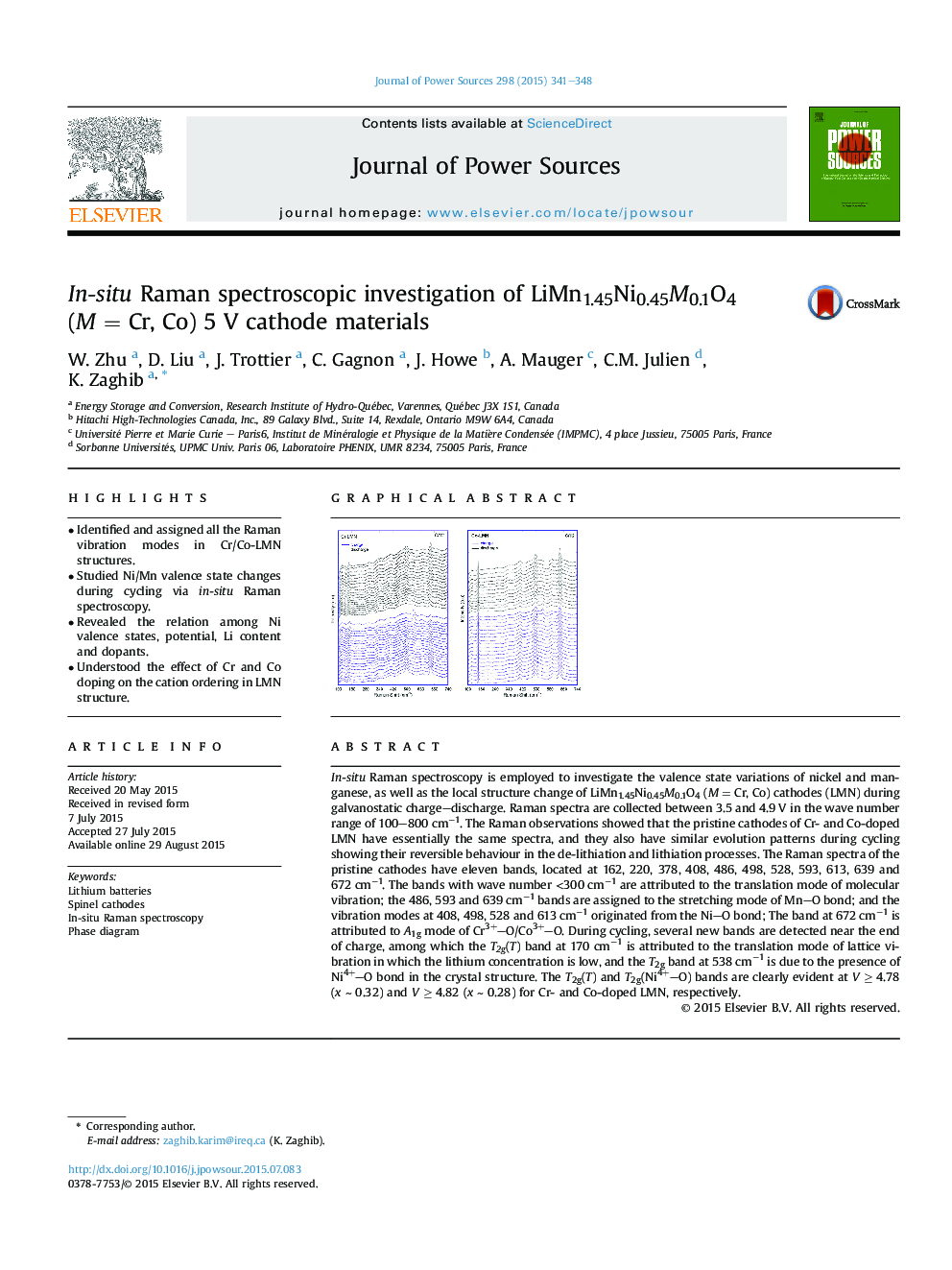| Article ID | Journal | Published Year | Pages | File Type |
|---|---|---|---|---|
| 1283840 | Journal of Power Sources | 2015 | 8 Pages |
•Identified and assigned all the Raman vibration modes in Cr/Co-LMN structures.•Studied Ni/Mn valence state changes during cycling via in-situ Raman spectroscopy.•Revealed the relation among Ni valence states, potential, Li content and dopants.•Understood the effect of Cr and Co doping on the cation ordering in LMN structure.
In-situ Raman spectroscopy is employed to investigate the valence state variations of nickel and manganese, as well as the local structure change of LiMn1.45Ni0.45M0.1O4 (M = Cr, Co) cathodes (LMN) during galvanostatic charge–discharge. Raman spectra are collected between 3.5 and 4.9 V in the wave number range of 100–800 cm−1. The Raman observations showed that the pristine cathodes of Cr- and Co-doped LMN have essentially the same spectra, and they also have similar evolution patterns during cycling showing their reversible behaviour in the de-lithiation and lithiation processes. The Raman spectra of the pristine cathodes have eleven bands, located at 162, 220, 378, 408, 486, 498, 528, 593, 613, 639 and 672 cm−1. The bands with wave number <300 cm−1 are attributed to the translation mode of molecular vibration; the 486, 593 and 639 cm−1 bands are assigned to the stretching mode of Mn–O bond; and the vibration modes at 408, 498, 528 and 613 cm−1 originated from the Ni–O bond; The band at 672 cm−1 is attributed to A1g mode of Cr3+–O/Co3+–O. During cycling, several new bands are detected near the end of charge, among which the T2g(T) band at 170 cm−1 is attributed to the translation mode of lattice vibration in which the lithium concentration is low, and the T2g band at 538 cm−1 is due to the presence of Ni4+–O bond in the crystal structure. The T2g(T) and T2g(Ni4+–O) bands are clearly evident at V ≥ 4.78 (x ∼ 0.32) and V ≥ 4.82 (x ∼ 0.28) for Cr- and Co-doped LMN, respectively.
Graphical abstractFigure optionsDownload full-size imageDownload as PowerPoint slide
